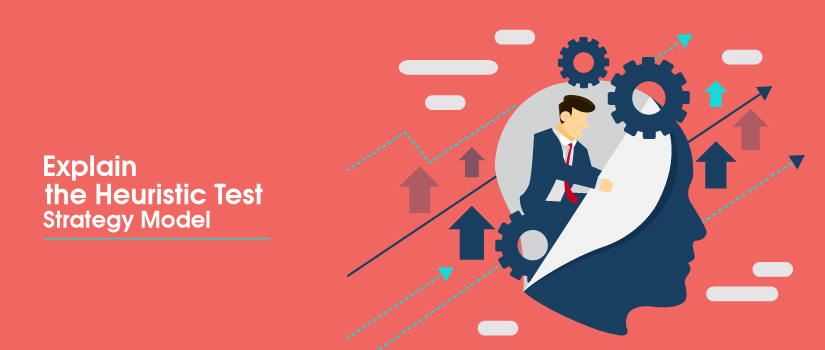
Explain the Heuristic Test Strategy Model
December 6th, 2017

Heuristic test strategy model is the set of patterns that are used to design a test strategy for a particular product. To be used predominantly by professional testers with an aim of self learning, a heuristic model particularly includes a project environment with numerous testing techniques that help in identifying the product’s quality criteria and product elements.

Some of the key areas of heuristic model are as mentioned below:
- Project environment is a set of resources and limitations related to the project that may impact the entire process of testing.
- Product elements are the elements or specific areas of a product that the testers intend to test. The aim behind this is to include all relevant and important areas that require attention.
- Quality criteria are the specific rules, ethics and sources that assists testers in identifying if a product has some issues or not.
- Test techniques are the methods used to create tests for a product. These involve analysis and study of project’s environment, product elements and quality criteria.
- Perceived quality is the result attained after conducting tests on a product. This involves applying of various testing methods, which enables one to reach a conclusion about the product’s quality.
Common Testing Techniques
Since heuristic is an observation-based model that evolves over time, there are a few other techniques that can be applied universally in every sphere. These include the following:
- Function testing
This type of testing is used to identify the functions performed by a particular product. It involves testing each component of the program to validate its functions and sub functions.
- Domain testing
To conduct this type of testing, the user decides on the type of data to be tested for different functions along with several other aspects such as typical values, invalid values, convenient values, etc.
- Stress testing
This type of testing aims at testing the product’s functionality under different stress situations. The conditions selected can be varied such as complex data structure, high load, long test runs and low memory conditions.
- Flow testing
Conducted to check the entire flow of the program, flow testing is based on establishing connection between activities.
- Scenario testing
This type of testing is done to check the product on the basis of all the possible situations and circumstances. Conducting this helps in identifying the way in which a product would respond in different situations.
- Claims testing
This testing is done to verify the various claims made about the product in magazines, advertisements or any other place.
- User testing
Conducting this type of testing helps in determining the ways in which a user interacts with the system. The aim behind this type of testing is to be at the users place and test the product from his/her perspective.
- Risk testing
This type of testing is used to check the way in which a product responds in a particular circumstance or situation. Designing of appropriates test cases based on the issues identified is an important part of this type of testing. The best test cases can be prepared after seeking help from past test reports, design documentation, etc.

- Automatic Checking
This type of testing enables one to conduct automated testing of a product. It is important to ensure that the tool selected for automated testing enables one to partially automate test coverage, use automatic test data generators, etc.
Things to consider before conduction heuristic testing
It is important to keep certain key factors in mind before conduction this form of testing. Some of these include:
- The purpose of the project as interpreted by the user as well as the tester
- Information needed to conduct the test should be precise and concise
- Relationship between tester and developer
- The team members who will be conducting or supporting the test
- The sequence and duration of product events
Selecting product elements
While performing a test, it is important to ensure that all the unique and important aspects of the product are taken in focus so that there is no bug that is missed. Some of the product elements that are important while conducting a test are:
- Structure of the final product
- Functionality delivered by the product
- The data used by the product and to be used while testing the product
- Interfaces that are used to access the product/system
- Identifying the ways in which product will be used
- Defining quality criteria such as reliability, usability and scalability
Conclusion
Testing a product involves a lot of challenges. Therefore, it is important to have well-defined strategies that can enable one to deal with such challenges and situations. Since heuristic model is one such strategy, implementing some new rules and focusing on developing some better products can enable one to deliver much-better products.


 Software Testing Events
Software Testing Events App Testing
App Testing Web App Testing
Web App Testing Game Testing
Game Testing Automation Testing
Automation Testing Load Testing
Load Testing Security Testing
Security Testing Performance Testing
Performance Testing Hire a Tester
Hire a Tester





